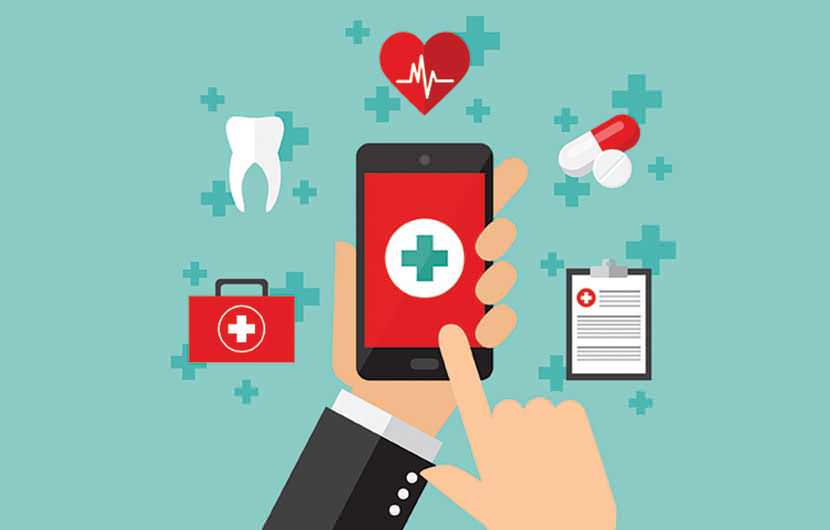Health
M-health the future of Indian healthcare industry: Ravi Virmani, Credihealth
More Indians are using smartphones and the Internet to avail basic necessities than ever before. This has led to an increasing demand among consumers for omni-channel experiences across multiple sectors. The government’s focussed initiatives, such as ‘Digital India’, and infrastructural investments have added to this demand. These digital drivers, along with a growing economy, are preparing us for a more disruptive, highly-engaging, and digitised India. The Indian healthcare industry, currently valued at $100 billion, is undergoing a similar process of change and innovation, brought on by its collaboration with the IT sector. But even as industry estimates predict the country’s healthcare market to grow at a CAGR of 22.9% to be worth $280 billion by the year 2020, one cannot help but notice the glaring roadblocks in the way of the industry’s growth hindering the realization of its massive potential.
The first fundamental problem with the Indian healthcare industry is a lack of basic infrastructure for primary healthcare distribution and the low patient-to-doctor ratio. One of the major reasons for this is poor execution of healthcare programs and the lack of investment by the government. As a result, healthcare services in rural and semi-urban areas are neither standardised nor at par with the setup in urban areas.
As per estimates from The World Bank, the per capita healthcare expenditure in India has remained stagnant at around $60 for the last decade or so. This number stands nowhere when compared to the corresponding indicators from developed countries in Western Europe or North America. Several growing large economies, too, have been spending much more than India on healthcare: the per capita healthcare expenditure in China stands at around $300, while Brazil spends $1000 per head. The public expenditure on health in India is currently estimated to be around 1.2% of the Gross Domestic Product (GDP), despite lofty healthcare spending targets like 2.5% as outlined in the government’s documents such as National Health Policy 2015, 11th Five Year Plan, and 12th Five Year Plan. Successive governments have been unable to provide healthcare policy a tangible direction, something which could possibly improve the abysmal state of public health systems in the country.
This brings us to the question – how does mobile technology fit in here and how can it help? To understand the difference that technology can make to the Indian healthcare landscape, there is a need to first understand what mobile healthcare or m-health is.
M-health is a method for delivering healthcare services or information through a mobile phone, enabling comprehensive healthcare management services which previously could only be accessed through face-to-face interactions with medical practitioners. It acts as an enabling service and provides a platform for exchange of information and services between patients and healthcare providers through mobile applications, e-health platforms, and telemedicine services.This is particularly beneficial to developing countries such as India, which lack the healthcare infrastructure and skilled workforce of their more developed counterparts.
In particular, m-health allows the delivery of accessible and good quality primary healthcare services in rural and semi-urban areas, which are home to more than 60% of the Indian population. Each district health centre, panchayat, or state-run village clinic can function as a mobile health-tech solution centre through either self-diagnostic, tech-enabled screens, or a video consultation facility connected via the internet to well- equipped facilities hundreds of miles away. This can help bridge the gap between the urban and rural distribution system, thus enabling patients to save money on travel and avail the best possible consultation remotely.
The fact that patients in India are willing to pay to get access to affordable healthcare can give a definite shot in the arm to the country’s m-health services. In a recent survey, it was found that 20 percent of respondents from developing countries are willing to pay $5 per annum as subscription to a mobile healthcare service. For developed countries, the figure was 10 percent of this. The readiness to pay for m-health is higher in less developed countries because the ratio of cost of standard healthcare to income is higher; a trip to a specialist located in a mid-sized town 200 km away would cost a patient as much as INR 2,000 for a night’s accommodation and food, besides the INR 500 they may have to pay for the appointment. Such prohibitive economics is the major reason that deters millions from availing healthcare services until it is a medical emergency.
Bringing this vision to fruition, though, will require public-private partnerships and effective CSR programs by hospitals, healthcare firms, and health-tech companies. The private sector, which currently accounts for about 74% of the total healthcare expenditure in the country, will need to make more investment in developing better and more affordable healthcare technologies.There is also a need to make medical practitioners more technologically adept,encouraging them to adopt m-health for diagnostic purposes as well as for follow-up consultations and staying in touch with patients.
But the healthcare sector is highly regulated, which makes it impossible for mobile solutions to achieve scale merely through private sector pilot projects and initiatives. The government must, therefore, play its part by implementing m-health specific policies and addressing regulatory loopholes. The liability of each stakeholder in an ecosystem that comprises doctors, healthcare providers, practitioners, IT service providers, and data analysts – all of whom play a part in the service delivery network – also needs to be clearly outlined. Doing so will provide a strong public push to scale up operations and drive wide-spread adoption for mobile-based healthcare solutions.
The evolving healthcare business model in India will lead to a better delivery of services to patients, provided that the necessary policies are introduced and implemented to ensure protection of consumers with minimum legal complexity. If the recent spate of healthcare-tech firms in the market is any indication, the sector is poised for some significant developments and collaborations that will create numerous growth opportunities for the Indian healthcare sector.
Several start-ups have played an important role in improving the overall healthcare landscape in the country, and will continue to do so in different ways. To begin with, start-ups have revolutionised the delivery of healthcare in India across geographical and socioeconomic boundaries. With the application of intelligent technology such as robotics, social networks, and complex simulators, health-tech start-ups have bridged the gap between patients and healthcare providers. Besides allowing patients with better access to advanced medical treatments, start-ups are also creating employment opportunities in the country. In addition to the operational and organisational aspects, start-ups are also venturing into the drug discovery and development domain, where vast opportunities lie for both existing as well as new players. One of them is the development of next-generation antibiotics to treat multi-drug resistant diseases. With such innovation and growth in the sector, we may well expect the next big anti-cancer drug to come out of India in the next decade. A more conducive and robust start-up ecosystem, therefore, can improve job creation as well as healthcare delivery through an unparalleled integration of technology and healthcare processes.
Given the response generated so far in the Indian market, it can safely be said that the adoption of mobility-led healthcare technologies will act as a catalyst for facilitating accessibility to world-class medical facilities. From first consultations to providing life-saving treatments and drugs to patients across the country, m-health can supplement and eventually replace the traditional healthcare service delivery models, underlining why it is considered the future of the Indian healthcare landscape.
Disclaimer: The views and opinions expressed in this article are those of the authors and do not necessarily reflect the official policy or position of the publication










































